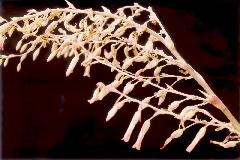
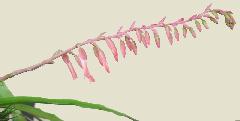
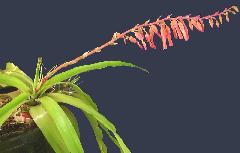
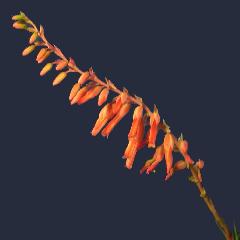
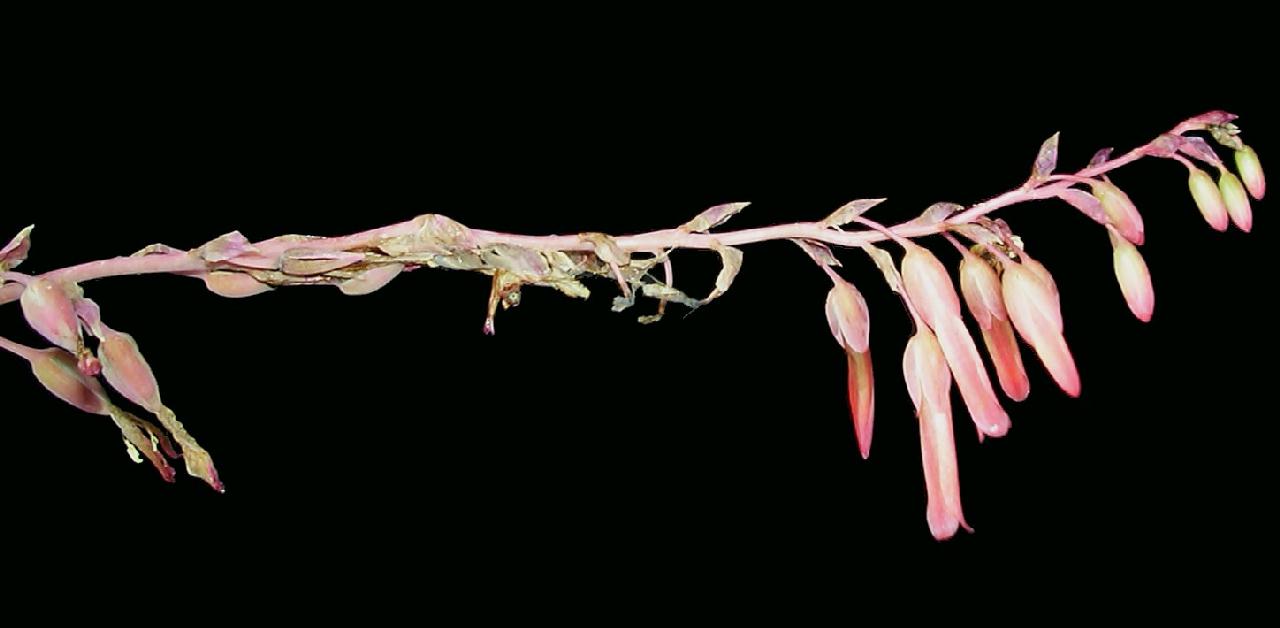
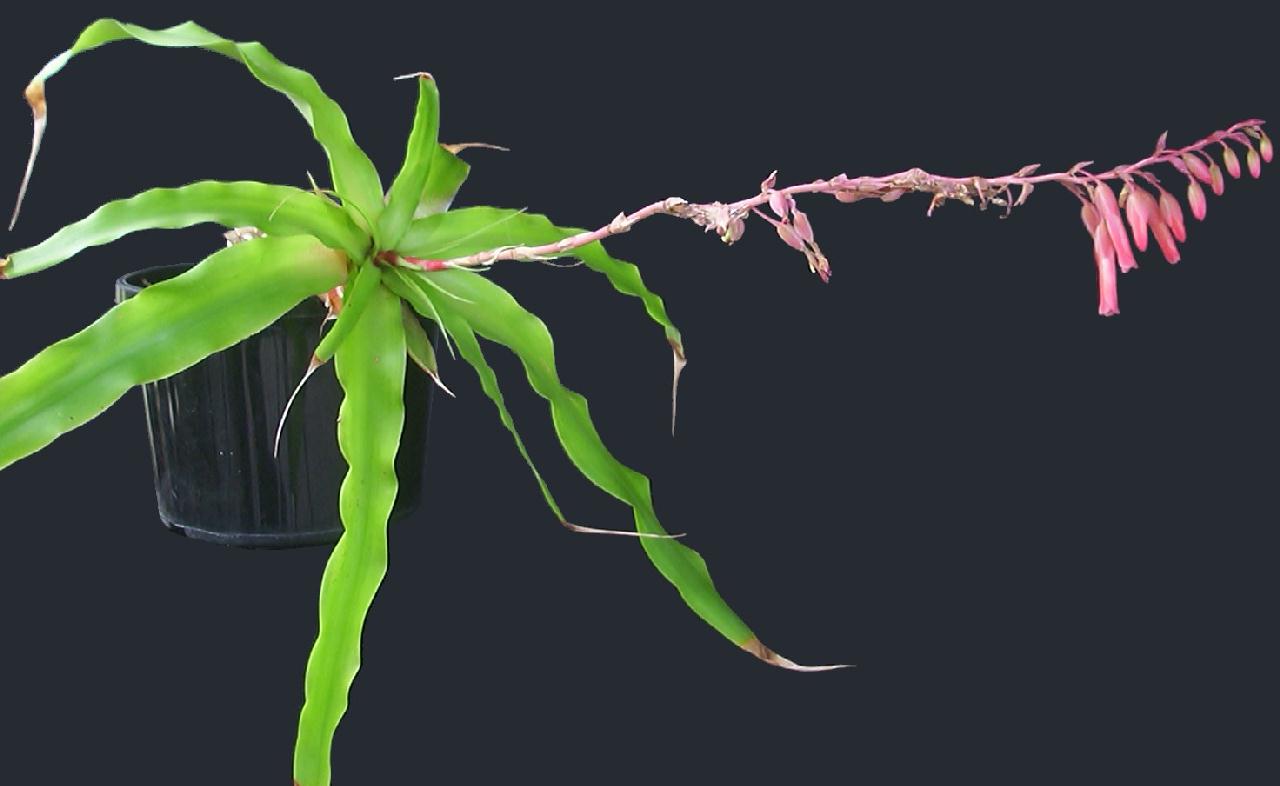
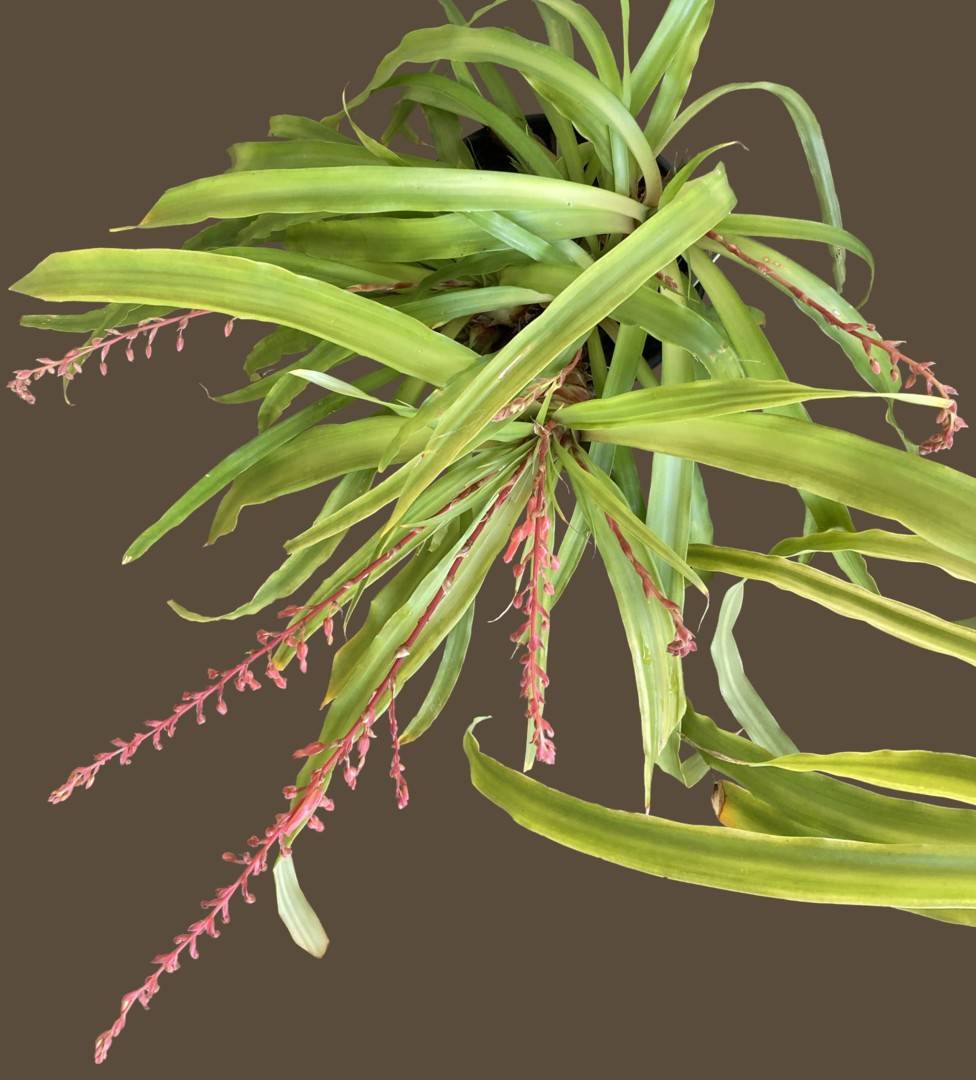
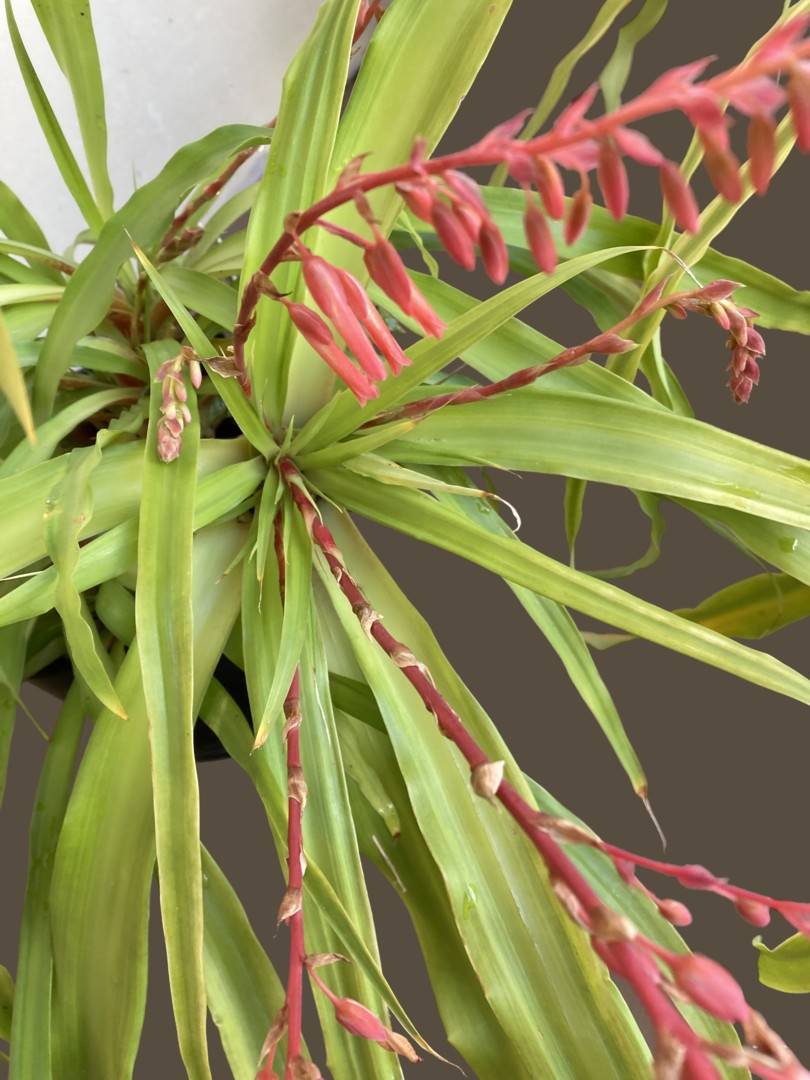
Until this time, a "showy" Fosterella would have seemed to be an oxymoron considering that all of the species thus far described produce small white blossoms of minimal attractiveness, at least to human observers. All of the 17 species treated in the latest revision of the genus (Smith & Read, 1992) have small (less than 10 mm long), white, presumably entomophilous flowers.
Fosterella spectabilis H. Luther, sp. nov. (figures 12-13).
Type. Bolivia. Santa Cruz: near Angostura,elev. ca. 1700 m, Aug. 1993, D. Cathcart B-17 legit.; flowered in cult. SEL 95-415, 12 Mar. 1996, H E Luther s.n. (Holotype SEL; Isotypes LPB, WU, NY, HB, US, MO).
A F. penduliflora (C.H. Wright) L.B. Smith affinis sed flores perlongioribus rubentibusque differt.
Plant a terrestrial or lithophyte, 0.7-1.0 in diameter flowering 0.7-0.9 m tall, spreading by 1-2 cm long, stout basal or interfoliar stolons.
Leaves densely rosulate, spreading, entire, 35-50 cm long, 25 to 30 in number.
Leaf sheaths broadly ovate, 15-20 (cm but really mm see JBS 47. 165, 1997) X 35-50 mm, pale or tinged or spotted reddish.
Leaf blades narrowly lanceolate, narrowed towards the leaf sheaths, acute to acuminate, 25-38 mm wide, thin-coriaceous but with a somewhat succulent central channel that becomes pale when dried, the margins somewhat undulate, glabrous adaxially, inconspicuously appressed lepidote and somewhat paler abaxially, green but tinged or spotted reddish toward the leaf sheaths abaxially.
Scape erect to ascending, 30-40 cm X 3-6 mm, green, more or less glabrous.
Scape bracts erect, imbricate but not entirely concealing the scape, elliptic, attenuate, green tinged or spotted reddish abaxially.
Inflorescence laxly bipinnate with 5 to 12 branches, 30-55 X 15-40 cm.
Primary bracts like the upper scape bracts, becoming gradually smaller toward the apex of the inflorescence, shorter than to equalling the sterile bases of the branches.
Branches at first arcuate then subsecund spreading, 10-30 cm long, laxly secund-flowered.
Floral bracts ovate to elliptic, acute to attenuate, 10-12 X 4-8 mm, thin, nerved, reddish-green.
Flowers with a slender 10-15 mm long pedicel, pendent, opening during the day and producing a conspicuous quantity of sweet nectar.
Sepals elliptic, broadly acute, 8-9 mm long, somewhat glaucous, pale green tinged reddish.
Corolla semitubular, spreading only at the apex at anthesis, becoming somewhat twisted but remaining erect (not coiling) postanthesis.
Petals ligulate, obtuse, 22-24 mm long, unappendaged, reddish to coral-orange.
Stamens nearly equalling to slightly exceeding the corolla.
Anthers basifixed, 2 mm long, bright yellow.
Filaments very slender, 15-19 mm long, translucent white, the epipetalous filaments adnate to the petals for ca. 3 mm from their base, the antesepalous filaments free.
Stigma simple erect.
Fruit a dry capsule 7-8 mm long. Seeds bicaudate, 1-1.5 mm long.
This new species differs from all known species of Fosterella by having much longer flowers with a semi-tubular (not spreading) corolla that is reddish or coral-colored (not white or cream-colored) This suite of characters along with abundant nectar production suggests that F. spectabilis is an ornithophilous species, a novelty in an otherwise rather stereotyped genus.